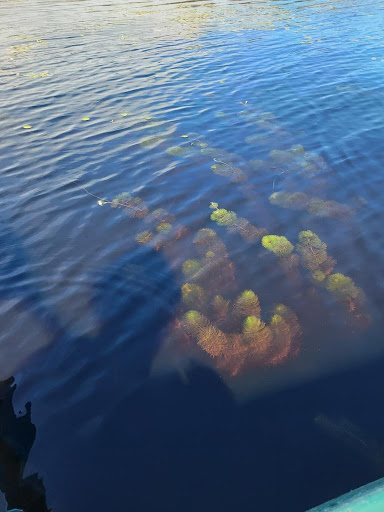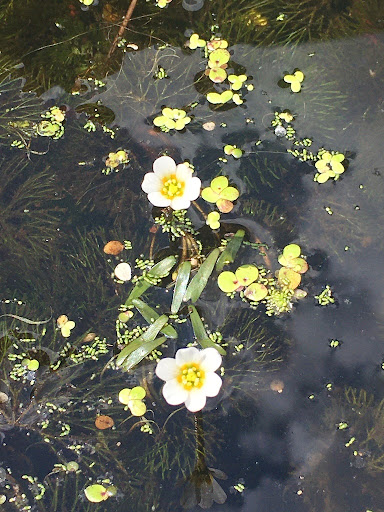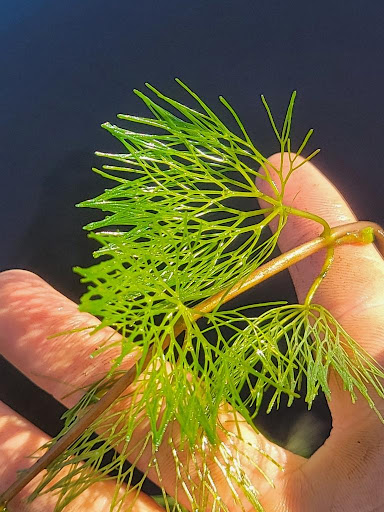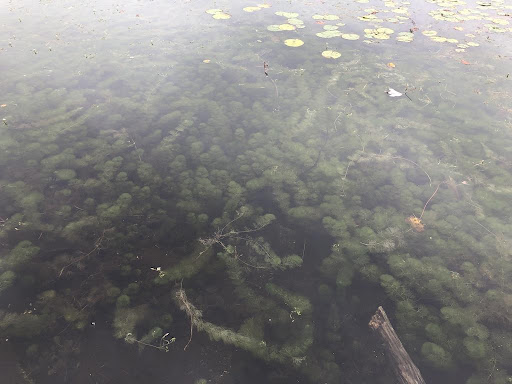Bottom-rooted, submersed aquatic plant. Stems usually 1-2 m but up to 10 m long. Underwater leaves opposite, fan-like and finely divided; floating leaves small, oblong, up to 3 cm long. Blooms late spring to early fall with small flowers (0.6-1.6 cm wide) that rise above the water surface. Flowers are white to pale yellow, sometimes with a purple or pink tinge.
Calm, slow-moving freshwater lakes and streams to a depth of 3 m; particularly thrives in acidic conditions. Carolina fanwort grows quickly and forms dense underwater mats that shade out native plants and reduce biodiversity. It can create stagnant areas with lower levels of oxygen, which can negatively affect fish habitat and become breeding grounds for mosquitoes. It can also clog drainage systems, and cause recreational activities like swimming, canoeing and fishing to become difficult or impossible.
A popular aquarium plant, it was most likely introduced to Frog Pond through improper disposal of aquarium plants. Once introduced, it can spread along connected waterways or be moved by animals or human activities (e.g., boats, fishing).

Aquatic plant, deeply and finely divided, feather-like leaves. Forms large monoculture stands.




This species can spread both by seed and stem fragments. New plants can establish from broken fragments as small as 2.5 cm, which can remain viable for up to 6 weeks before rooting. Boat propellers can easily break up plants and moving just a small piece of stem can be enough to spread this invasive species to a new water body or river system.
You can start by purchasing native plants for aquariums and gardens. Properly dispose of unwanted plants or rehome instead of releasing into natural habitats (Don’t Let It Loose). Follow the Clean, Drain, Dry initiative when moving from one area to another. When boating nearby a known patch of this invasive plant, slow down to reduce the likelihood of creating additional fragments. If you spot this invasive species, report the location to iNaturalist, or directly to the NSISC.
Join our mailing list.